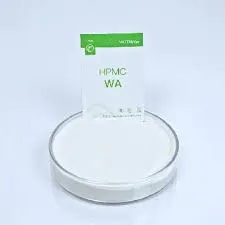
ئۆكتەبىر . 20, 2024 19:50 Back to list
Exploring the Applications and Benefits of Hydroxypropyl Methylcellulose in Various Industries
The Versatility of Hydroxypropyl Methylcellulose (HPMC) in Various Industries
Hydroxypropyl methylcellulose (HPMC) is a semisynthetic polymer derived from cellulose, widely recognized for its remarkable properties and versatile applications across various industries. As a non-toxic, biodegradable compound, HPMC has gained significant attention in sectors such as pharmaceuticals, food, construction, and personal care. This article will explore the characteristics, applications, and benefits of HPMC, shedding light on its importance in today's world.
The Structure and Properties of HPMC
HPMC is formed by the modification of cellulose, a natural polymer found in plant cell walls. By introducing hydroxypropyl and methyl groups into the cellulose structure, HPMC exhibits enhanced solubility in water and improved thermal stability. This compound is available in various molecular weights and substitution patterns, enabling it to be tailored for specific applications.
One of the most notable properties of HPMC is its ability to form gels and viscous solutions when mixed with water. It acts as an effective thickening agent, stabilizer, and emulsifier, making it an essential ingredient in many formulations. Additionally, HPMC is odorless, tasteless, and free from allergens, which contributes to its widespread use in consumer products.
Applications in the Pharmaceutical Industry
In the pharmaceutical sector, HPMC serves multiple roles, particularly in the formulation of drug delivery systems. It is used as a binder in tablets, enhancing the cohesiveness of the formulation while ensuring a controlled release profile. For hydrophilic matrices, HPMC plays a crucial role in moderating the release of active pharmaceutical ingredients (APIs), making it an ideal choice for sustained release formulations.
Moreover, HPMC is utilized in ophthalmic solutions, where it acts as a viscosity-increasing agent, improving the comfort and retention time of eye drops. Its biocompatibility and safety make it a valuable excipient for various pharmaceutical applications, ensuring the efficacy of medications while adhering to regulatory standards.
HPMC in Food Products
The food industry also benefits significantly from HPMC’s unique properties. It is used as a thickener, stabilizer, and texturizer in a variety of food products, including sauces, dressings, and baked goods. HPMC enhances the mouthfeel and viscosity of products, improving their overall quality and consumer appeal.
hpmc hydroxypropyl methylcellulose

Additionally, HPMC is employed in gluten-free formulations, where it helps mimic the texture and elasticity typically provided by gluten. By incorporating HPMC, food manufacturers can create gluten-free products that meet the demands of health-conscious consumers without compromising taste or texture.
Role in Construction and Building Materials
HPMC's versatility extends to the construction industry, where it is used as a redispersible polymer powder in dry-mix mortars, tile adhesives, and plasters. Its ability to enhance adhesion, workability, and water retention makes it an essential additive in construction materials. HPMC improves the performance of these materials, leading to better results in building applications.
Furthermore, HPMC contributes to the sustainability of construction practices by reducing energy consumption and waste. As a biodegradable alternative to synthetic polymers, HPMC helps meet the growing demand for environmentally friendly building materials.
Applications in Personal Care Products
HPMC is also widely utilized in personal care products such as lotions, creams, and shampoos. It acts as a thickening agent, ensuring the proper viscosity needed for effective application. Additionally, HPMC enhances the stability of emulsions, helping to maintain the texture and consistency of skincare formulations.
Due to its non-toxic nature and compatibility with a wide range of ingredients, HPMC has become a preferred choice for formulators in the personal care industry.
Conclusion
Hydroxypropyl methylcellulose is a valuable polymer that spans a wide range of applications. Its unique properties, such as solubility, thickening ability, and safety, make it indispensable in pharmaceuticals, food products, construction materials, and personal care items. As industries continue to seek sustainable and effective solutions, HPMC is poised to play an even more significant role in future developments, underscoring its versatility and importance in modern applications.
-
Unlocking the Benefits of HPMC Products: A Gateway to Versatile Applications
NewsAug.07,2025
-
Unleashing the Potential of HPMC Ashland: A Comprehensive Look
NewsAug.07,2025
-
Tile Bonding Cellulose: The Key to Superior Adhesion and Durability
NewsAug.07,2025
-
Hydroxypropyl Methylcellulose Powder: The Versatile Component in Modern Pharmaceuticals
NewsAug.07,2025
-
Hydroxyethyl Cellulose: The Versatile Solution for Various Industries
NewsAug.07,2025
-
Hydroxyethyl Cellulose (HEC): The Versatile Polymer for Various Applications
NewsAug.07,2025







